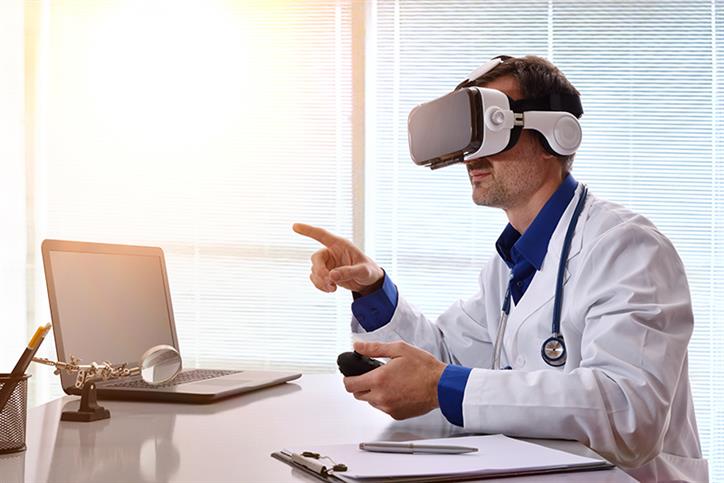
When you think of virtual reality, what comes to mind?
If you’re like most people, probably video gamers immersed in a virtual quest.
But VR technology is poised to have larger implications than games and entertainment. And one important industry that could be reshaped by VR tech sooner rather than later is health care. Researchers in the field of chronically painful illnesses have been studying VR as a treatment for patients’ chronic pain symptoms, and the early results are noteworthy.
The first thing you should know--and this may surprise you--is less than 30 percent of patients who experience neuropathic pain benefit from medications, according to David Putrino, Ph.D., who runs Mount Sinai’s Abilities Research Center. This low response rate to standard medications has led Putrino and his team to look for ways to bypass the need for medications in the first place.
Enter, virtual reality.
How VR Could Be the Solution
The human brain is wired with a subset of neurons called “mirror neurons.” This neural network fires and gets excited whether you’re actually performing a task, or just watching someone perform the task. “What that means is just the act of observation, or just the act of imagination can actually trigger a whole network of neurons” says Putrino.
These mirror neurons can serve as a backdoor of sorts to the human nervous system. And this means that, in theory, pain receptors could be tricked with an imagined or virtual space. In Putrino’s work, he states there has been a 40% reduction in pain for patients, on average, occurring within 10 minutes of exposure to a virtual space.
For anyone who has taken a psychology course, this may sound similar to experiments for phantom limb syndrome, the neurological disorder that can cause pain in a hand, foot or limb that doesn’t exist. Neuroscientists famously experimented with a “mirror box” that put the intact limb in a box with a mirror. The presence of the reflection can then create an illusion of having the missing limbs and allow the suffering person to “stretch out” the phantom pains.
But, despite these promising findings, not all chronic pain is created equal. While you can recreate a hand or foot with VR trickery, you can do no such simulation for a damaged spine or other internal body part.
Whether VR becomes an officially sanctioned medical treatment in the near future remains to be seen. But one thing is clear: the technology itself is poised to make a difference in the real world.
Learn more: https://variety.com/2019/gaming/news/doctors-look-to-virtual-reality-to-treat-chronic-pain-1203167803/
